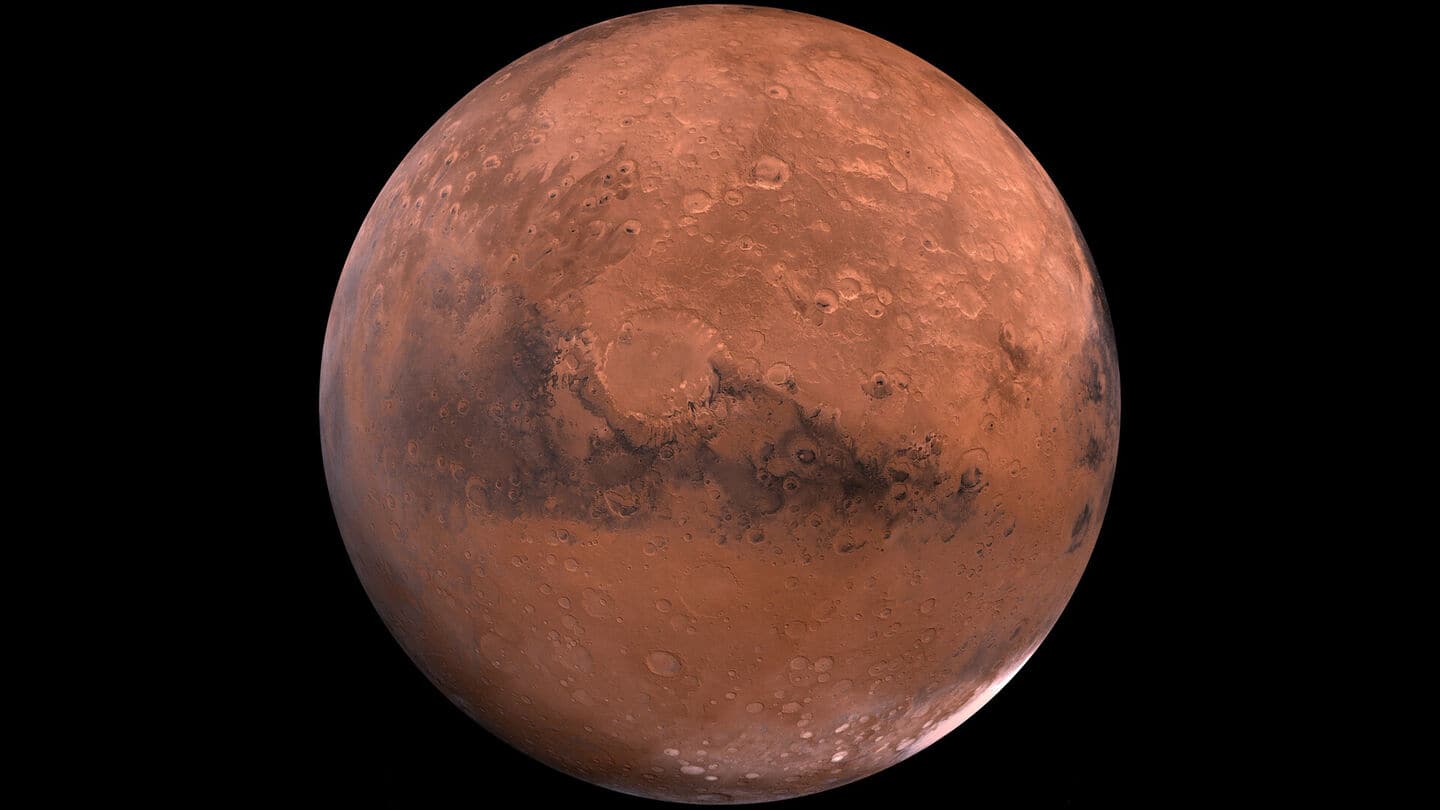
Did it rain on ancient Mars?—New study says yes
What's the story
Mars, the Red Planet, looks nothing like Earth today. However, its geological features indicate it once had a warm and wet climate like ours.
New research suggests that Mars may have even experienced periods of rain and snow.
The source of this water, however, remains a mystery as most climate models predict surface temperatures too cold for liquid water.
Research findings
Computer simulations provide insight into Mars's ancient climate
Amanda Steckel, a postdoctoral researcher at Caltech, noted that the valleys on Mars start at different elevations and cannot be explained by ice alone.
To get to the bottom of this, Steckel and her team employed computer simulations to recreate what Mars could have looked like four billion years ago.
Their model indicated that water could have shaped Mars's surface significantly during this period.
Ancient waterways
Mars's ancient lakes and rivers revealed through simulations
Their model, originally developed for Earth, was modified to simulate the evolution of Mars's landscape near the equator.
This region is marked by large channel networks that empty into ancient lakes or perhaps an ocean.
NASA's Perseverance rover is currently investigating Jezero Crater, where a mighty river once poured into the basin.
Brian Hynek from the University of Colorado Boulder said, "You'd need meters deep of flowing water to deposit those kinds of boulders seen in Jezero."
Earth's parallels
Geological features hint at Mars's temperate past
Steckel added that geological features on Earth show visual similarities to those on Mars.
She said, "You could pull up Google Earth images of places like Utah, zoom out and you'd see the similarities to Mars."
The team proposed two theories for how these valleys might have formed: one where the planet was warm and wet, and another where ice melted temporarily at the edge of a large ice cap.
Model outcomes
Different models yield different valley formations
Each scenario resulted in different valley formations on Mars.
In the ice-melt model, valleys started at high elevations close to where the ice would have been.
But the warm and wet version created much wider spread valley networks forming everywhere from low-lying regions to over 11,000-feet above the planet's average surface.
This distribution matches better with what we actually see on Mars: valley networks scattered across many different elevations and regions.
Climate implications
Precipitation likely played a significant role in shaping Mars's valleys
The study indicates precipitation was a major factor in carving these valleys, meaning ancient Mars probably had a climate warm enough to allow rain and even snow.
While more evidence is required, Hynek said the study provides important clues about not just Mars but also Earth's early history.
He said, "Once the erosion from flowing water stopped, Mars almost got frozen in time and probably still looks a lot like Earth did 3.5 billion years ago."